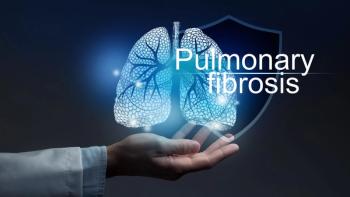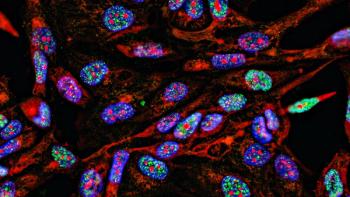
- Pharmaceutical Technology-05-02-2008
- Volume 32
- Issue 5
Unfolding Catalytic Routes to APIs
Chemocatalytic and biocatalytic routes show promise for more efficient syntheses of select active ingredients.
Optimizing a synthesis for an active pharmaceutical ingredient (API) or intermediate often requires developing an alternative catalytic route. Recent developments in chemocatalysis and biocatalysis show several interesting approaches.
Patricia Van Arnum
Metal-catalyzed hydrogen-mediated C–C bond formation
Catalytic hydrogenation is widely used in API synthesis, including asymmetric reactions. Catalytic hydrogenation involves the addition of hydrogen to unsaturated organic molecules to form saturated compounds. Conventional hydrogenation involves hydrogen delivery to a single functional group, but the technique of hydrogen delivery across multiple functional groups with concomitant carbon–carbon (C–C) bond formation has been limited.
Hydrogen-mediated C–C bond formation has been used for alkene hydroformylation and the Fischer–Tropsch reaction, but these reactions require carbon dioxide as a coupling partner (1). Work by Michael J. Krische, professor of chemistry at the
Krische's work in hydrogen-mediated C–C bond formation was recognized last year with the Dowpharma Prize Lecture for Creativity in Chiral Chemistry at Chiral USA and the
For pharmaceutical syntheses, hydrogen-mediated C–C bond formation may achieve high optical purity in enantioselective reactions using various chiral ligands in transition-metal catalysts. In a recent example, Krische reported enantioselective reductive aldol couplings of vinyl ketones through a rhodium catalyst modified by a new monodentate Taddol-like phosphonite ligand (3). In another example, Krische reported on hydrogen-mediated C–C bond formations catalyzed by iridium for the direct regioselective reductive coupling of alkyl-substituted alkynes to activated ketones (1, 4).
Enantioselective iridium-catalyzed imine vinylation is another approach using hydrogen-mediated C–C bond formation. In this method, alkyenes are hydrogenated in the presence of N-arylsulfonyl imines using an iridium catalyst modified by (R)-Cl-MeO-BIPHEP to obtain the corresponding allylic amines in high optical purity (5).
Hydrogen-mediated C–C bond formation may also allow chemists to use less expensive feedstocks in API synthesis. Two cardiovascular drugs, for example, "Vasotec" (enalapril) by Merck & Co. (Whitehouse Station) and "Zestril" (lisinopril) by
Figure 1: Enalapril (1) and lisinopril (2) are active ingredients that could potentially be synthesized using hydrogen-mediated carbonâcarbon bond formation. (ALL MOLECULES IN FIGURE ARE COURTESY OF US FOOD AND DRUG ADMINISTRATION)
The enantioselective coupling of acetylene, another low-cost feedstock, also shows the promise of hydrogen-mediated C–C bond formation. Krische's work shows that exposing aldehydes or α-ketoesters to equal volumes of acetylene and hydrogen gas in the presence of cationic rhodium catalysts provides products of Z-butadienylation: two molecules of acetylene, a molecule of a vicinal dicarbonyl compound, and one molecule of elemental hydrogren (6).
Biocatalysis in API synthesis
In addition to chemocatalysis, biocatalysis is used to synthesize APIs or intermediates. Historically, pharmaceutical companies have been reluctant to use biocatalysts because naturally occurring biocatalysts have not been viable economically for commercial production. This situation, however, is changing as biocatalysts may be engineered to address some of the drawbacks of conventional chemistry. Enzyme-catalyzed reactions can exhibit higher enantioselectivity, regioselectivity, substrate specificity, and stability, and therefore require mild conditions (i.e., ambient pressures and temperatures) to react while achieving higher reaction efficiency and product yields.
Biocatalysis is part of the toolbox of major pharmaceutical companies and fine-chemical producers, such as
A case in point is
As an example of its work in pharmaceuticals, Codexis developed four enzymes and reduced the cost of two intermediates for producing atorvastatin, the API in Pfizer's "Lipitor." It supplies Pfizer with one of these intermediates and generic atorvastatin manufacturers with the other intermediate, according to the company's S-1 filing.
The key advanced chiral intermediate in atorvastatin is tert-butyl (4R, 6R)-6-cyanomethyl-2, 2-dimethyl-1,3-dioxane-4-acetate (ATS-8 or TBIN). Pfizer's traditional ATS-8 process uses a sodium borohydride (NaBH4) reduction of the corresponding (5R)-hydroxy-3-ketoester (ATS-6 or HK) under cryogenic conditions to give, after quenching, the (3R, 5R)-dihydroxyester (ATS-7 or diol). The ATS-6 is first converted in situ to a diastereodirecting boron chelate by treating diethylmethoxyborane that is reacted with NaBH4 below 85 °C to promote diastereoselectivity. After the reaction, the borane reagent is regenerated and recovered by repeated methanol quenches and vacuum distillations. Several percent of the undesired (3S)-diastereomer is formed. Subsequently, the ATS-7 diol, an oil, is protected as its acetonide, ATS-8. ATS-8's diastereopurity is upgraded by crystallization with concomitant product loss (2).
To improve the synthesis, Codexis developed a biocatalytic route. The process involves reducing ATS-6 to stereopure ATS-7. It uses a ketoreductase biocatalyst specifically evolved to reduce ATS-6 with perfect diastereoselectivity under green reaction conditions (300 g/L in water at ambient temperature and pressure) with a previously evolved glucose dehydrogenase biocatalyst that returns the oxidized cofactor nicotinamide adenine dinucleotide phosphate (NADP+) to its reduced state (NADPH). This process eliminates the use of boron reagents, reduces solvent use by 85%, decreases waste by 60%, and increases the yield of ATS-7 with greater stereopurity. Codexis's biocatalytic process is used commercially to supply ATS-8 to generic atorvastatin manufacturers (2).
Codexis is developing intermediates and APIs for the generic equivalents of several branded pharmaceutical products, according to the company's S-1 filing. The company plans to launch an intermediate for Merck & Co.'s "Singulair" (montelukast); esomeprazole, the API in AstraZeneca's "Nexium" (see Figure 2); and rosuvastatin, the API in AstraZeneca's "Crestor" (see Figure 2). Other products for which it plans to sell generic APIs are levetiracetam, the API in "Keppra" by
Figure 2: Examples of active ingredients for which biocatalytic routes are being developed: rosuvastatin (1) and esomeprazole (2). (ALL MOLECULES IN FIGURE ARE COURTESY OF US FOOD AND DRUG ADMINISTRATION)
Last year, Codexis developed biocatalyst panels to allow innovators to screen biocatalysts for activity against existing drug compounds and pipeline candidates. Once a useful biocatalyst is discovered through the panels or in-house screening, Codexis provides the biocatalyst for commercial manufacture or provides further screening and optimization if needed. Merck & Co. was Codexis's first customer for the panels.
To develop its biocatalysts, Codexis uses gene shuffling to manipulate the genetic code for a biocatalyst to produce variants of the enzyme with improved industrial characteristics. It also uses whole genome shuffling to manipulate the genome of a microbe to produce new microbial variants. This technique entails protoplast fusion, which fuses two or more cells into one, followed by the regeneration of normal cells, to shuffle the genome. High-throughput screening methods screen the biocatalysts for activity. Codexis's proprietary "ProSAR" bioinformatics software quantifies the effect of specific mutations in an improved biocatalyst variant.
Phosphite dehydrogenase-based NADP regeneration technology
Enzyme-catalyzed reactions that require stoichiometric amounts of reduced nicotinamide cofactors, nicotinamide adenine dinucleotide (NADH) and its phosphorylated form (NADPH) have much potential in biocatalysis. A drawback, however, is these cofactors are expensive. Preparative applications require regeneration of the cofactors in situ, usually by a second enzyme with high specificity for a sacrificial substrate (2).
Researchers have successfully addressed this problem. Huimin Zhao, professor in the Department of Chemical and Engineering, Wilfred A. van der Donk, professor in the Department of Chemistry, and William Metcalf, professor in the Department of Microbiology at the
Zhao and his team discovered and characterized a wild-type PTDH enzyme from Pseudomonas stutzeri that catalyzes the oxidation of phosphite to phosphate with the reduction of NADP+ to NADPH. His team engineered a PTDH variant with improved stability, activity, and cofactor specificity. The variant PTDH also has higher specific activity, a higher thermodynamic equilibrium constant, and a broader pH-rate maximum. The phosphite substrate is also inexpensive (2, 7).
The team used a membrane bioreactor for the synthesis of L-tert-leucine and xylitol using the variant PTDH for cofactor regeneration. The PTDH system has many applications for the industrial synthesis of unnatural amino acids, polyols, and chiral alcohols. The technology was licensed to
Patricia Van Arnum is a senior editor at Pharmaceutical Technology, 485 Route One South, Bldg F, First Floor, Iselin, NJ, 08830, tel. 732.346.3072,
References
1. M.J. Krische, "Formation of C–C Bonds via Catalytic Hydrogenation," presented at Chiral USA (Philadelphia, PA, July 2007).
2. "The Presidential Green Chemistry Challenge Awards Program: Summary of 2007 Award Entries and Recipients," Environmental Protection Agency (Washington, DC, 2007).
3. M.J. Krische et al., "Diastereo- and Enantioselective Hydrogenative Aldol Coupling of Vinyl Ketones: Design of Effective Monodentate Taddol-Like Phosphonite Ligands," J. Am. Chem. Soc. 130 (9), 2746–2747 (2008).
4. M.Y. Ngai, A. Barchuk, and M.J. Krische, "Iridium-Catalyzed C–C Bond Forming Hydrogenation: Direct Regioselective Reductive Coupling of Alkyl-Substituted Alkynes to Activated Ketones," J. Am. Chem. Soc. 129 (2), 280–281 (2007).
5. M.J. Krische, M.Y. Ngai, and A. Barchuk, "Enantioselecetive Iridium Catalyzed Imine Vinylation: Optically Enriched Allylic Amines via Alkyne-Imine Reductive Coupling Mediated by Hydrogen," J. Am. Chem. Soc. 129 (42), 12644–12645 (2007).
6. J.R. Kong and M.J. Krische, "Catalytic Carbonyl Z-Dienylation via Multicomponent Reductive Coupling of Acetylene to Aldehydes and α-Ketoesters Mediated by Hydrogen: Carbonyl Insertion into Cationic Rhodacyclopentadienes," J. Am. Chem. Soc. 128 (50), 16040–16041 (2006).
7. T. Johannes, R. Woodyer, and H. Zhao. "Efficient Regeneration of NADPH Using an Engineered Phosphite Dehydrogenase," Biotechnology and Bioengineering, 96 (1), 18–26 (2007).
Articles in this issue
over 17 years ago
Requiem for a Vaccineover 17 years ago
Report from Europeover 17 years ago
Converging InformationTechnology & Automation Teamsover 17 years ago
Florida Builds its Position in the Life Sciencesover 17 years ago
Unplugged: Developing Standards for Wireless Automationover 17 years ago
Dissolving the InsolubleNewsletter
Get the essential updates shaping the future of pharma manufacturing and compliance—subscribe today to Pharmaceutical Technology and never miss a breakthrough.





